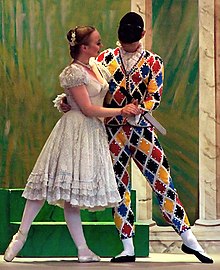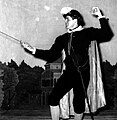Costume is the distinctive style of dress or cosmetic of an individual or group that reflects class, gender, profession, ethnicity, nationality, activity or epoch. In short costume is a cultural visual of the people.

Kabuki (歌舞伎) is a classical form of Japanese dance-drama. Kabuki theatre is known for its heavily-stylised performances, the often-glamorous costumes worn by performers, and for the elaborate kumadori make-up worn by some of its performers.
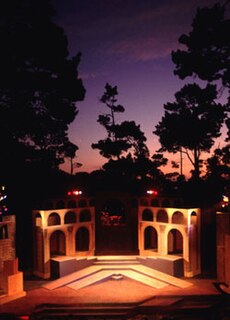
The following outline is provided as an overview of and topical guide to theatre:
Mise-en-scène is the stage design and arrangement of actors in scenes for a theatre or film production, both in visual arts through storyboarding, visual theme, and cinematography, and in narrative storytelling through direction. The term is also commonly used to refer to single scenes that are representative of a film. Mise-en-scène has been called film criticism's "grand undefined term". It has been criticized for its focus on the theatrical or dramatic design aspects rather than the plot itself, as those who utilize Mise-en-scène tend to look at what is "put before the camera," rather than the story. The use of mise-en-scène is significant as it allows the director to convey messages to the viewer through what is placed in the scene, not just the content of the scene.
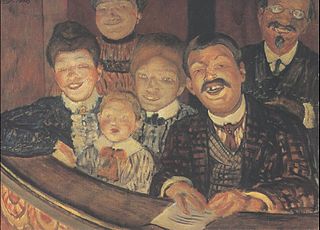
Farce is a comedy that seeks to entertain an audience through situations that are highly exaggerated, extravagant, ridiculous, absurd, and improbable. Farce is also characterized by heavy use of physical humor; the use of deliberate absurdity or nonsense; satire, parody, and mockery of real-life situations, people, events, and interactions; unlikely and humorous instances of miscommunication; ludicrous, improbable, and exaggerated characters; and broadly stylized performances.

Fop became a pejorative term for a man excessively concerned with his appearance and clothes in 17th century England. Some of the many similar alternative terms are: coxcomb, fribble, popinjay or dandy, fashion-monger, and ninny. Macaroni was another term of the 18th century more specifically concerned with fashion.
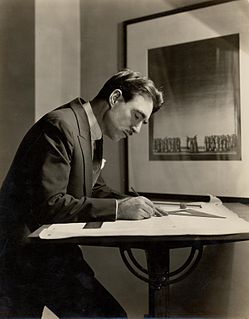
Stagecraft is a technical aspect of theatrical, film, and video production. It includes constructing and rigging scenery; hanging and focusing of lighting; design and procurement of costumes; make-up; stage management; audio engineering; and procurement of props. Stagecraft is distinct from the wider umbrella term of scenography. Considered a technical rather than an artistic field, it is primarily the practical implementation of a scenic designer's artistic vision.

Noh is a major form of classical Japanese dance-drama that has been performed since the 14th century. Developed by Kan'ami and his son Zeami, it is the oldest major theatre art that is still regularly performed today. Although the terms Noh and nōgaku are sometimes used interchangeably, nōgaku encompasses both Noh and kyōgen. Traditionally, a full nōgaku program included several Noh plays with comedic kyōgen plays in between; an abbreviated program of two Noh plays with one kyōgen piece has become common today. Optionally, the ritual performance Okina may be presented in the very beginning of nōgaku presentation.

Ancient Greek theatre was a theatrical culture that flourished in ancient Greece from 700 BC. The city-state of Athens, which became a significant cultural, political, and religious place during this period, was its centre, where the theatre was institutionalised as part of a festival called the Dionysia, which honoured the god Dionysus. Tragedy, comedy, and the satyr play were the three dramatic genres to emerge there. Athens exported the festival to its numerous colonies. Modern Western theatre comes, in large measure, from the theatre of ancient Greece, from which it borrows technical terminology, classification into genres, and many of its themes, stock characters, and plot elements.

A prop, formally known as (theatrical) property, is an object used on stage or screen by actors during a performance or screen production. In practical terms, a prop is considered to be anything movable or portable on a stage or a set, distinct from the actors, scenery, costumes, and electrical equipment.
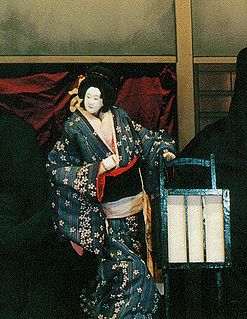
Bunraku is a form of traditional Japanese puppet theatre, founded in Osaka in the beginning of the 17th century, which is still performed in the modern day. Three kinds of performers take part in a bunraku performance: the Ningyōtsukai or Ningyōzukai (puppeteers), the tayū (chanters), and shamisen musicians. Occasionally other instruments such as taiko drums will be used.

Costume design is the creation of clothing for the overall appearance of a character or performer. Costume may refer to the style of dress particular to a nation, a class, or a period. In many cases, it may contribute to the fullness of the artistic, visual world which is unique to a particular theatrical or cinematic production. The most basic designs are produced to denote status, provide protection or modesty, or provide visual interest to a character. Costumes may be for a theater, cinema, or musical performance but may not be limited to such. Costume design should not be confused with costume coordination which merely involves altering existing clothing, although both create stage clothes.

Clowns have always been an integral part of the circus, offering a source of amusement for patrons and providing relief from the array of animal acts and performances by acrobats and novelty artistes.

Dramaturgy is a sociological perspective commonly used in micro-sociological accounts of social interaction in everyday life.
The technical rehearsal or tech rehearsal is a rehearsal that focuses on the technological aspects of the performance, in theatrical, musical, and filmed entertainment.

The architectural form of theatre in Rome has been linked to later, more well-known examples from the 1st century BC to the 3rd Century AD. The Theatre of ancient Rome referred to as a period of time in which theatrical practice and performance took place in Rome has been linked back even further to the 4th century BC, following the state’s transition from monarchy to republic. Theatre during this era is generally separated into genres of tragedy and comedy, which are represented by a particular style of architecture and stage play, and conveyed to an audience purely as a form of entertainment and control. When it came to the audience, Romans favored entertainment and performance over tragedy and drama, displaying a more modern form of theatre that is still used in contemporary times. 'Spectacle' became an essential part of an everyday Romans expectations when it came to Theatre. Some works by Plautus, Terence, and Seneca the Younger that survive to this day, highlight the different aspects of Roman society and culture at the time, including advancements in Roman literature and theatre. Theatre during this period of time would come to represent an important aspect of Roman society during the republican and imperial periods of Rome.

Museum theatre is the use of theatre and theatrical techniques by a museum for educational, informative, and entertainment purposes. It can also be used in a zoo, an aquarium, an art gallery, and at historic sites. It is generally performed by professional actors. Varieties of museum theatre include historical characters, puppetry, movement and music.

An actor or actress is a person who portrays a character in a performance. The actor performs "in the flesh" in the traditional medium of the theatre or in modern media such as film, radio, and television. The analogous Greek term is ὑποκριτής (hupokritḗs), literally "one who answers". The actor's interpretation of a role—the art of acting—pertains to the role played, whether based on a real person or fictional character. This can also be considered an "actor's role," which was called this due to scrolls being used in the theaters. Interpretation occurs even when the actor is "playing themselves", as in some forms of experimental performance art.

Commedia dell'arte was an early form of professional theatre, originating in Italy, that was popular throughout Europe between the 16th and 18th centuries. It was formerly called Italian comedy in English and is also known as commedia alla maschera, commedia improvviso, and commedia dell'arte all'improvviso. Characterized by masked "types", commedia was responsible for the rise of actresses such as Isabella Andreini and improvised performances based on sketches or scenarios. A commedia, such as The Tooth Puller, is both scripted and improvised. Characters' entrances and exits are scripted. A special characteristic of commedia is the lazzo, a joke or "something foolish or witty", usually well known to the performers and to some extent a scripted routine. Another characteristic of commedia is pantomime, which is mostly used by the character Arlecchino, now better known as Harlequin.

A play is a work of drama, usually consisting mostly of dialogue between characters and intended for theatrical performance rather than just reading. The writer of a play is called a playwright.
